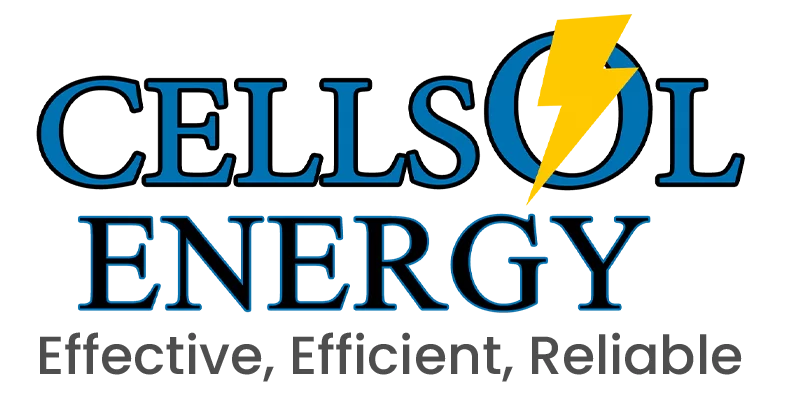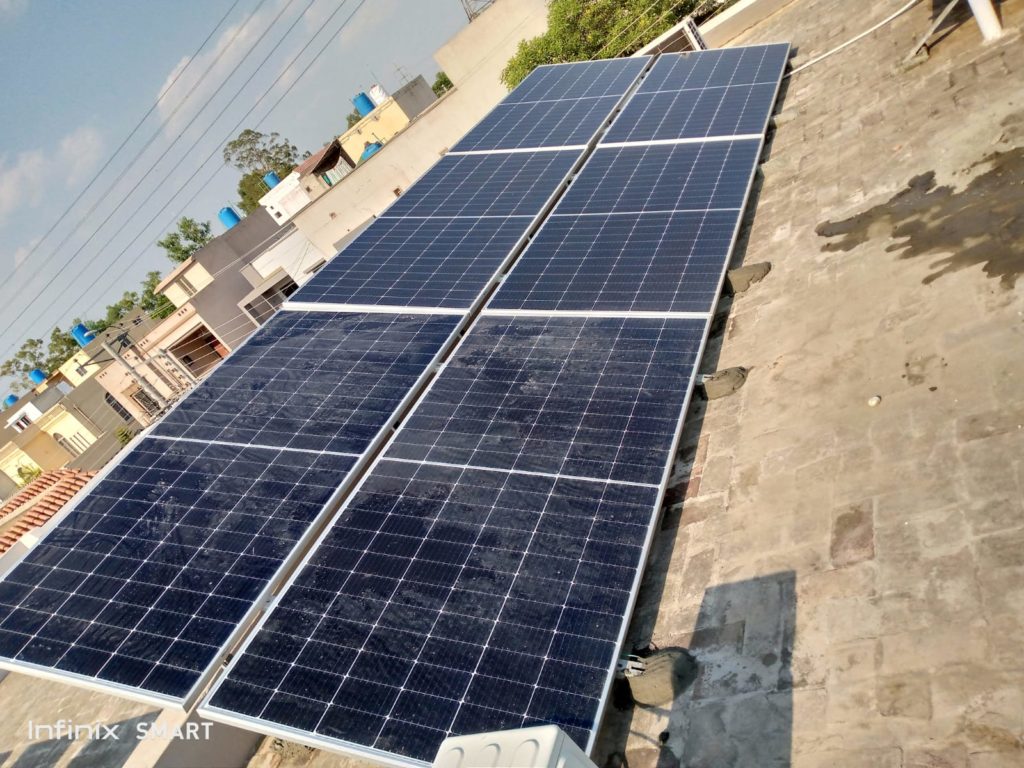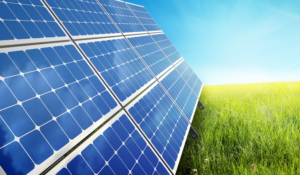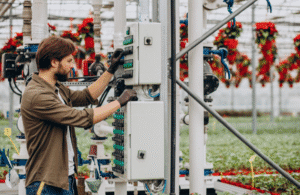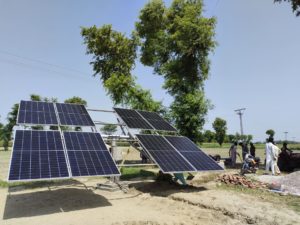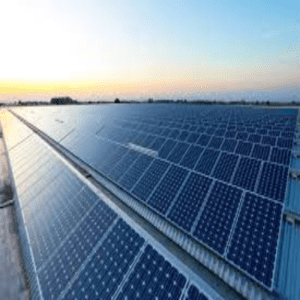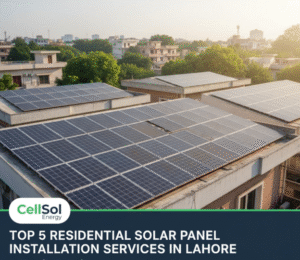39 uses of solar energy
Because our sun is the source of all life on Earth, solar energy can be useful to us in a variety of ways.
The sun generates two types of energy: light and heat, which we can use for a variety of purposes. These range from stimulating plant photosynthesis to producing electricity with photovoltaic (PV) cells to heating water and food.
Solar Electricity:
This solar energy application has grown in popularity in recent years.
Solar electricity is becoming more affordable as solar panel costs fall and more people become aware of the financial and environmental benefits of solar energy. While it still accounts for a small portion of the electricity generated in the United States (2.8% as of 2021), solar energy is rapidly expanding.
Solar Batteries and Generators:
A solar battery can be used in conjunction with your solar power system. This configuration allows you to use solar after sundown and provides backup power in the event of an emergency. Some homeowners may choose to go completely off-grid with a solar power and battery system or a solar power and generator system.
Solar Ventilation:
Solar ventilation solutions, such as solar attic fans, can reduce the load on your HVAC system by cooling your home during the summer. If you are unable to install a solar PV system that offsets your entire home’s electricity consumption, this may be a viable option. The Solar tube solar attic fan is one innovative product.
Solar ventilation technologies can also be used in commercial and industrial settings. In cold climates, these technologies can preheat a building’s air, lowering energy costs.
Solar Water Heating:
Homeowners can also use solar energy to power their water heaters.
Active solar water heater systems
Passive solar water heater systems
Active Solar Water Heater System:
Active solar water heaters use mechanical circulating pumps to move fluids between your rooftop solar panels and storage tank. These heaters, in turn, are classified into two types: A pump in a direct circulation system moves regular water into your home via solar collectors. Because water can freeze, direct circulation systems work best in climates where freezing temperatures are uncommon. Nonfreezing liquids are circulated through solar collectors to a heat exchanger in indirect circulation systems. The energy is then transferred to water, which
circulates throughout your home. In climates with freezing temperatures, indirect circulation systems can be used.
Passive Solar Water Heater Systems:
Passive solar water heaters are also classified into two types:
Integral collector storage systems incorporate a solar collector directly into their water tanks, allowing the sun to heat the tank. These systems work well in homes with high hot water demands and in climates where freezing temperatures are uncommon. In thermosiphon systems, the solar collector is lower than the storage tank, allowing heated water to rise into the tank. Installing thermosiphon systems is slightly more difficult because they are typically located on the roof.
Hot Water Solar Systems:
Solar collectors are used to heating water in hot water solar systems (or another fluid, such as antifreeze). Circulating pumps circulate the water through the collector and into a storage tank for later use or a heat exchanger for immediate warmth.
SOLAR-POWERED PUMPS:
Some of the above heating systems use a pump to circulate water. These pumps consume energy because they are powered by your home’s electricity. And that’s the energy you hoped to save in the first place by installing a solar-powered system.
Solar Heating for Your Swimming Pool:
Swimming pool heating is another solar energy application, particularly in the southern and southwestern united states. The systems circulate water to a collector, where it is heated by sunlight. The heated water is then pumped back into the pool by the system.
Solar Heating for Your Hot Tub:
You Might Be Surprised to Learn That Solar Energy Can Be Used to Heat a Hot Tub. However, Solar Vacuum Tubes Have Become So Efficient That They Can Overheat Your Tub in The Summer! To Avoid This, Homeowners in Warmer Climates Frequently Choose Flat Plate Panels, Which Do the Job Without Generating Too Much Heat.
Solar Landscape Lighting:
Landscape lighting is probably the first thing that comes to mind when you think of solar lighting. Solar landscape lighting technologies are both affordable and widely available. From your local hardware store to online shopping websites like amazon, you can find basic to high-end designs.
Solar Security Lighting:
Solar Lighting Fixtures Have Become So Dependable That They are also an Excellent Choice for Home Security Lighting. Like with Landscape Lighting, The Batteries Connected to Solar Security Lights Typically Generate Enough Energy to Power Them Through the Night. This Is Especially True for Motion-Sensor Options, Which Save Stored Energy When It Is Truly Needed.
Solar Holiday Lights:
That’s right, you can use solar during the holidays by using solar-powered Christmas lights. After all, everyone’s budgets are stretched this time of year; don’t add to that by paying for electricity to power Christmas lights! Good housekeeping looked at the seven best solar Christmas lights for 2022, which ranged from simple white string lights to unusually shaped options.
Indoor Solar Lighting:
Solar ovens, also known as solar cookers, are an excellent way to cook when the power goes out while camping, or simply to save money on electricity costs. They function by collecting and storing thermal energy from the sun. Consider your car on a hot sunny day, with the windows, rolled up. The windows allow in and trap thermal energy from the sun, causing the air inside to become hot. It’s no surprise that on extremely hot days, our cars feel like ovens!
Solar Cooler:
if you’re still toting an ice-packed cooler when you head to the park or campground, it’s time to bring you up to speed. Solar-powered coolers are now the go-to product. They ensure your food stays cool for longer and eliminate the issue of melted ice (and soggy sandwiches). Portable power stations receive energy from solar panels and then transfer that energy to the cooler when it’s in use.
Solar Portable Bluetooth Speaker:
solar-powered Bluetooth speakers function similarly to traditional wireless speakers. The difference is that they can be charged without using electricity because they have solar panels built in.
Solar Portable Bluetooth Speaker:
solar-powered Bluetooth speakers function similarly to traditional wireless speakers. The difference is that they can be charged without using electricity because they have solar panels built in.
Solar Calculators:
Solar calculators have tiny solar cells attached to them, usually at the top. Because calculators require so little energy to operate, the solar cells ensure that the battery will never need to be charged.
Solar Flashlights and Lanterns:
When the power goes out or the sun sets and your batteries run out, you’ll be glad you chose a solar-powered flashlight or lantern. Some of the best options can last up to 30 hours when fully charged, making them lifesavers in an emergency.
Wireless Solar Keyboard:
Wireless keyboards offer a much better typing experience because you can place your keyboard wherever it’s most comfortable. Plus, you don’t have to deal with cords.
Solar Battery Chargers:
The technology to integrate solar cells into our phones already exists, and it has been used in watches since the 1970s. Researchers in japan have even created lightweight, water-resistant solar cells that could be sewn into clothing to power devices in the future.
Solar Garden Decorations:
From solar-powered light-up wind chimes to colorful garden ornaments shaped like animals, insects, flowers, and more, you’re sure to find solar garden decorations that suit your style.
Solar Bird Feeders:
On the simpler (and less expensive) end of the spectrum, there are bird feeders, which are essentially solar-powered outdoor lights with integrated feeders. During the day, their solar cells charge their batteries, and at night, they light up to provide ambiance.
Solar Water Fountain:
What could be more than the soothing sound of water trickling from your garden fountain? That would be knowing that the fountain does not add to your electricity bill because it is powered by the sun’s energy.
Solar-Powered Irrigation Controllers:
We understand what you’re thinking. Irrigation timers don’t sound particularly appealing, but they do help keep your lawn lush, so we count them.
The beauty of solar-powered sprinkler controllers is that they allow you to automate your irrigation without the need for wiring; all you need is a standard garden hose and a water source.
Solar Watches:
Charging batteries is never easy, but it’s especially difficult with watches. Who has extra watch batteries on hand? Here come solar-powered watches. Solar watches are becoming increasingly popular because they are both environmentally friendly and long-lasting. And, as more and more watch brands go solar, you have a wide range of styles to choose from, ranging from casual to dressy to sporty.
Solar Backpacks:
Solar backpacks can charge your devices from anywhere thanks to small built-in solar panels that store energy in a battery pack. They’ll come in handy whether you’re an avid hiker, camper, photographer, or world traveler.
Solar Bluetooth Headphones, Earbuds, And Headset:
Surprisingly, solar-powered Bluetooth headphones are still relatively new on the market. Urbanista released a pair in 2021, and Adidas followed suit in 2022. Both options are self-charging thanks to built-in solar cells and have an 80-hour battery life.
Solar Bike Helmet:
Solar power has made great strides in the outdoor industry, so, unsurprisingly, you can buy solar-powered bike helmets. But just what their battery’s power might surprise you.
Solar Textiles:
solar textiles are not yet on the market, but they are being developed. And they certainly represent a novel new application of solar energy.
Home Solar EV Charging:
Electric vehicles (EVs) are becoming increasingly popular, accounting for 5.6% of the total auto market at the end of 2022, up from 2.7% at the end of 2021. With the growing popularity of EVs, people require an environmentally friendly way to charge them.
Solar Carports:
You can power your EV with an existing rooftop solar installation, but some homeowners are constructing specifically to power their electric vehicles (EVs). As an added benefit, these structures protect your EV (and your investment) from the weather.
Solar-Powered Mobile Homes and Tiny Homes:
Due to their lower energy requirements, tiny homes make excellent solar power candidates. They don’t have as much room for, um, electrical equipment.
Public Solar EV Charging:
Residential solar EV charging has already been mentioned, but there are also public EV charging stations that are powered by the sun. For on-the-go quick
charging, these stations are perfect. They are frequently paired with parking lots so that motorists can charge their cars while they are parked.
Solar Panel Parking Lots:
Solar panel parking lots are, as their name suggests, parking lots that are covered in solar panels. Parking lots can use ground-mounted systems, but they usually use parking lot structures to make room for vehicles on the ground. Solar-covered parking lots are becoming more and more common as a result of all the advantages they offer. These benefits include powering parked cars and even supplying energy to neighboring buildings.
Solar Bus Stop Shelters:
Solar bus shelters are another way that solar energy is used in public transportation. Solar panels are installed on the roof of solar bus shelters or close by. They produce electricity for lighting and advertising, and passengers can use it
to charge portable electronics. Options like that from the planet even include a bench and a phone charging station that arise built right in.
Solar Benches:
Solar benches use the same idea as solar bus shelters to add seating to parks, airports, and other public places. Solar benches offer a place for people to unwind and charge their phones as well as lighting after sundown, similar to solar bus stops.
